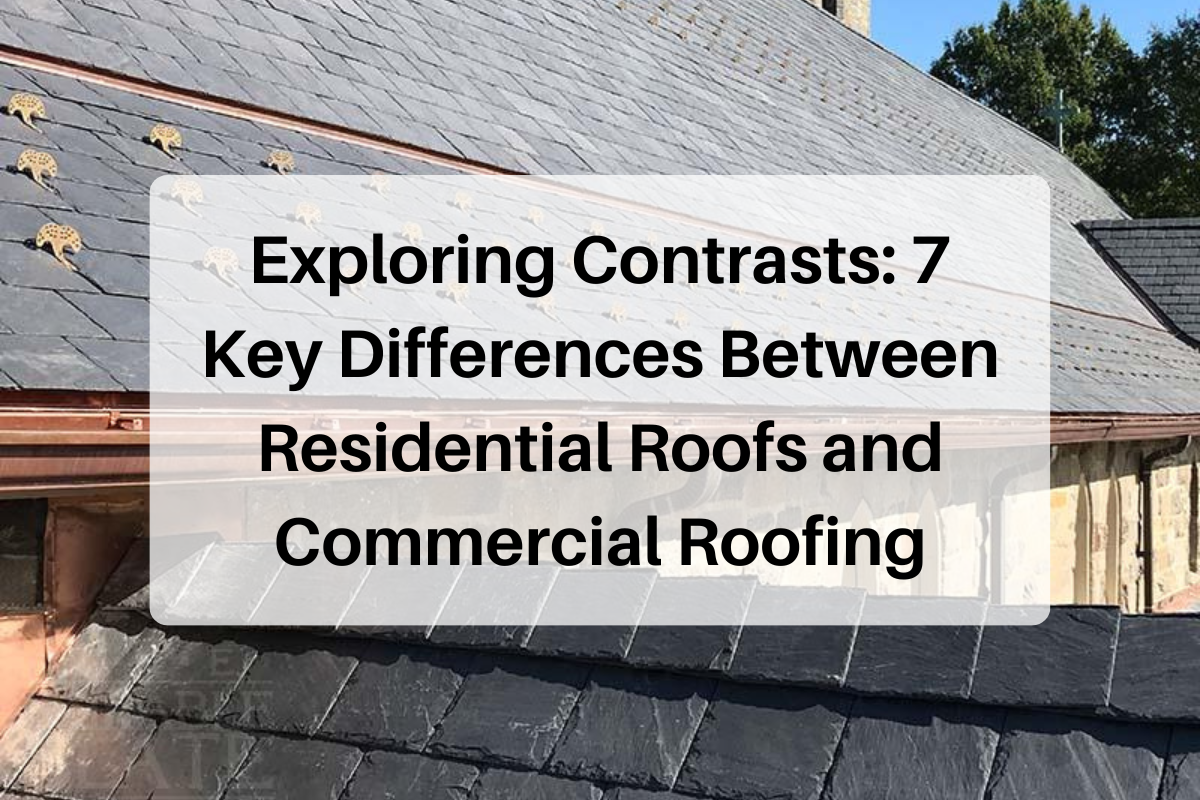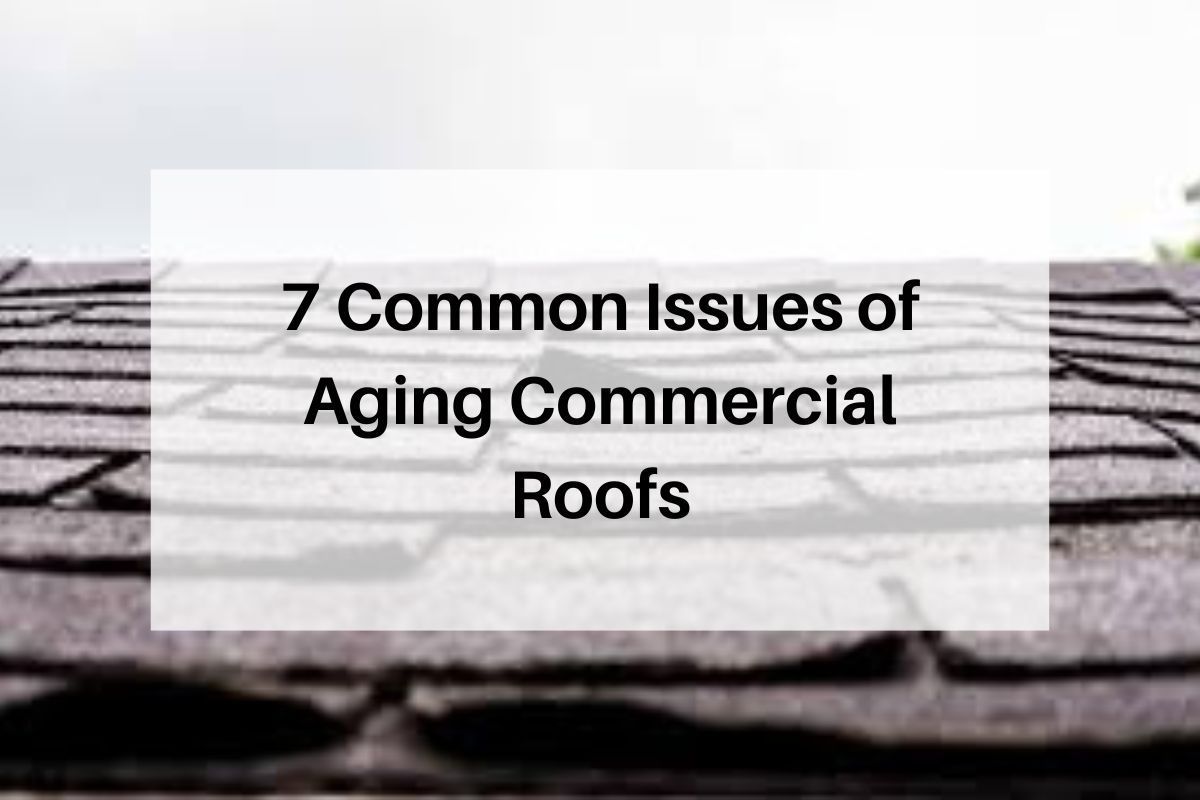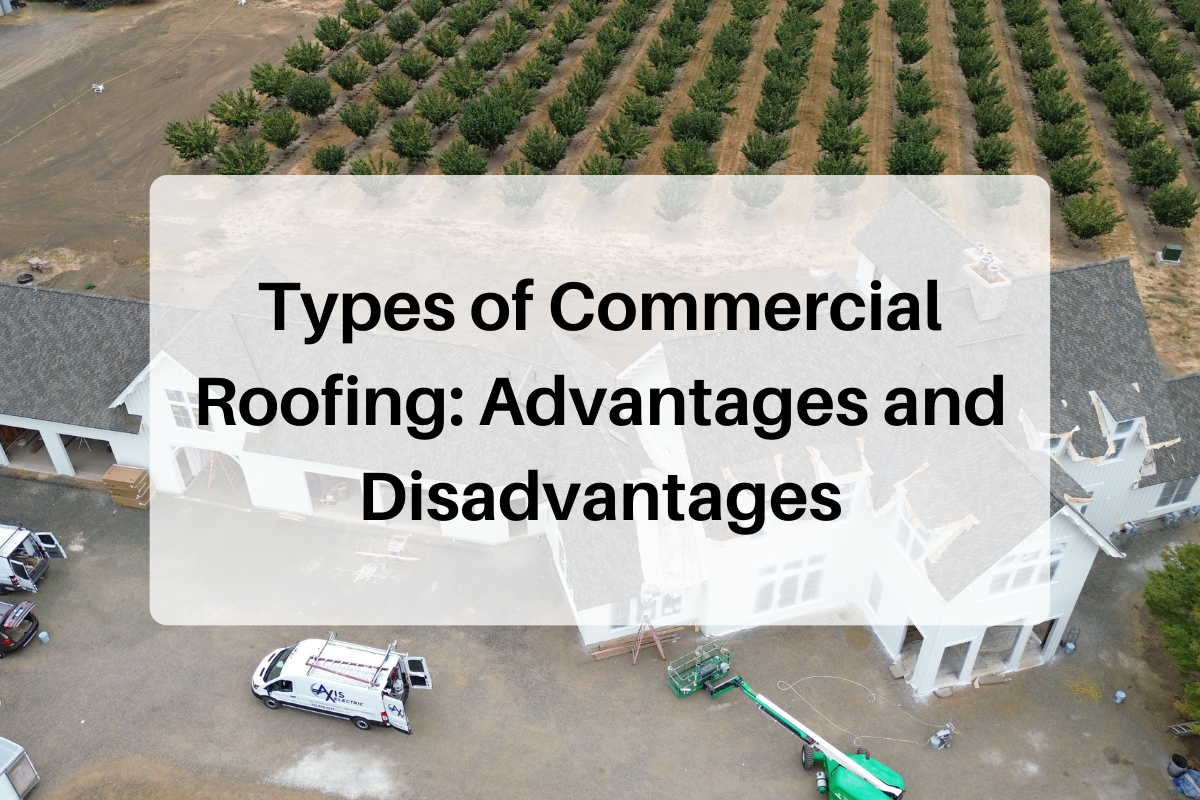Exploring Contrasts: 7 Key Differences Between Residential Roofs and Commercial Roofing
Whether a building is a busy commercial area or a comfortable residential residence, its roof is an essential component. However, the roofing needs of residential and commercial structures significantly differ due to their distinct purposes and designs. In this comprehensive, we will delve into the seven key differences between residential roofs and commercial roofing.

Structural Design
Residential Roofs: Typically, residential roofs have a simpler design, often comprising gable or hip structures. These designs are not only aesthetically pleasing but also cost-effective for smaller structures.
Commercial Roofing:
On the other hand,
commercial roofing is characterized by flat or low-slope designs. These designs accommodate the expansive nature of commercial buildings and allow for the installation of HVAC systems, solar panels, and other equipment.
Material Selection
Residential Roofs: Asphalt shingles are a popular choice for residential roofs due to their cost-effectiveness and ease of installation. Homeowners also have the option to choose materials like metal, wood, or tile based on their preferences and budget.
Commercial Roofing:
EPDM (ethylene propylene diene monomer), TPO (thermoplastic olefin), and modified bitumen are common materials used on commercial roofs. These materials provide durability and are better suited to withstand the challenges posed by larger roof areas.
Load-Bearing Capacity
Residential Roofs: The load-bearing capacity of residential roofs is designed to support the weight of typical household fixtures and occasional foot traffic for maintenance purposes.
Commercial Roofing: Commercial roofs must bear heavier loads due to the installation of HVAC systems, large equipment, and potential foot traffic for maintenance. The structural integrity is crucial to ensure safety and longevity.
Installation Complexity
Residential Roofs: Residential roofing projects are generally less complex and time-consuming, making the installation process relatively straightforward. This simplicity often results in a quicker turnaround time for residential roof installations.
Commercial Roofing: The installation of commercial roofing systems is more intricate and time-intensive. Factors such as the size of the building, the complexity of the roof design, and the need for specialized equipment contribute to the increased complexity of commercial roofing installations.
Cost Factors
Residential Roofs: The cost of residential roofing is influenced by factors such as the choice of materials, roof size, and the complexity of the design. Asphalt shingles are generally more budget-friendly, making residential roofing projects relatively affordable.
Commercial Roofing:
The cost of commercial roofing is typically higher due to the larger size of the roof and the need for specialized materials. However, the long-term benefits, including enhanced durability and energy efficiency, often justify the initial investment.
Maintenance Requirements
Residential Roofs: Residential roofs generally require less frequent maintenance. Homeowners typically need to address issues like damaged shingles, gutter cleaning, and occasional inspections to ensure the roof's integrity.
Commercial Roofing:
Due to the larger size and flat design of commercial roofs, regular inspections and maintenance are crucial to identify and address potential issues promptly. Regular maintenance helps extend the lifespan of the roofing system and prevents costly repairs.
Energy Efficiency
Residential Roofs: Energy efficiency in residential roofing is often achieved through proper insulation and the use of reflective roofing materials. Homeowners may also explore solar panel installations to further enhance energy efficiency.
Commercial Roofing: Commercial buildings often integrate energy-efficient roofing materials like TPO or reflective coatings to minimize heat absorption. Additionally, the flat design of commercial roofs provides ample space for solar panel installations, contributing to sustainable energy practices.
Conclusion
Understanding the key differences between residential roofs and commercial roofing is essential for homeowners, business owners, and roofing professionals alike. Whether you are planning to invest in a new roof for your home or commercial property, considering these distinctions will guide you in making informed decisions that align with your specific needs and budget. By recognizing the unique requirements of each roofing type, you can ensure the longevity, durability, and efficiency of your roofing system.
FAQ
How do residential roofs differ from commercial roofing?
Residential roofs are typically simpler, emphasizing aesthetics. Commercial roofing is often flat or low-slope, focusing on durability. Materials, design, and scale vary to meet distinct needs of homes and larger commercial structures.
What challenges do commercial roofs face?
Commercial roofs deal with larger surface areas, often flat or low-slope, requiring specialized materials like TPO or EPDM for waterproofing. Structural considerations and accommodating HVAC systems can present unique challenges.











Share On: